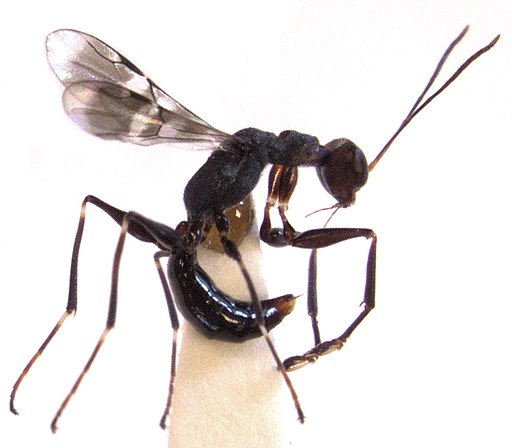Does the Spotted Lanternfly Have Natural Predators?
The Spotted Lanternfly does not have many natural enemies / predators in the United States, which has contributed to its rapid spread and significant impact on crops and trees. Examples of Spotted Lanternfly predation have slowly been making their way into recognition. These examples have been both scientifically and anecdotally observed. As more wildlife start to recognize the Spotted Lanternfly as food, increases in Spotted Lanternfly predation can help counter their spread.
Scientists are still trying to figure out what is driving certain wildlife to eat the lanternflies, and what is keeping some away still. It is well documented that Spotted Lanternflies feeding off of the Tree-of-Heaven may have a bitter taste due to the compounds in the tree that they uptake during feeding. This may keep some wildlife from consistently going after the lanternflies. It is also crucial to know which stage of the Spotted Lanternfly life cycle are wildlife eating the lanternflies? Is it only the nymphs? Adults? All stages? This can help gain more insight on the feeding patterns of wildlife.
Do Birds Eat Spotted Lanternflies?
Several bird species have been observed feeding on spotted
lanternflies, including blue jays, tufted titmice, woodpeckers, gray catbirds, wrens, and even chickens.
However, it is not yet clear how effective birds are at controlling the
population of the insect. Unfortunately, many birds do indeed find SLFs unpalatable, it seems.
 | |
| Great Crested Flycatcher attempting to get an SLF midair. Photo credit corderonature on inaturalist.org |
Do Insects and Bugs eat Spotted Lanternflies?
There are several insect species that are known to feed on spotted lanternflies, including praying mantises and assassin bugs, and some species of beetles. Scientists are exploring the use of these insects as biological control agents for the spotted lanternfly.
Assassin bugs are predatory insects that are known to feed on a variety of insects, including spotted lanternflies. The most common species of assassin bug that preys on spotted lanternflies is the wheel bug (Arilus cristatus).
Assassin bugs are effective predators of spotted lanternfly nymphs and adults because they use their sharp, needle-like mouthparts to pierce the exoskeleton of the insect and inject a toxic saliva that paralyzes and kills the prey. They then use their mouthparts to suck out the body fluids of the insect.
In some instances, it has been found that wheel bugs are laying egg masses near spotted lanternfly egg masses. Once the wheelbugs hatch they essentially lay and wait for the spotted lanternflies to hatch as well.
 |
| Can you see it? This mantis has a Spotted Lanternfly in its grasp! Go get em! Photo credit britty705 on inaturalist.org |
There's evidence of other bugs and crawlers such as spiders, ants, and wasps feeding off of spotted lanternflies as well.
- Beauveria bassiana (Icing Sugar Fungus): This is a fungus that occurs naturally in soils around the world and is known to infect and kill a wide range of insects. Researchers have found that spraying B. bassiana spores on spotted lanternflies can help control their populations. When the fungus infects the insect, it grows rapidly inside its body, ultimately causing death.
- Isaria fumosorosea: This is a fungus that has shown promise in controlling spotted lanternflies. Researchers have found that spraying I. fumosorosea spores on the insects can lead to a significant reduction in their populations. The fungus infects the insects by penetrating their exoskeleton and growing inside their bodies.
- Batkoa major is a fungal pathogen that has shown promise in controlling spotted lanternflies. Like other fungi used for biological control, B. major infects and kills the insects, reducing their populations.
Research has shown that B. major can effectively control spotted lanternflies, particularly when applied as a spray. In one study, the fungus was able to infect and kill over 80% of the spotted lanternflies it was applied to, significantly reducing their numbers. - Dryinus browni is a parasitic wasp species that has been identified as a natural enemy of spotted lanternflies. This species of wasp is native to Asia and has been shown to parasitize spotted lanternfly egg masses, reducing their populations.
When a female D. browni wasp finds a spotted lanternfly egg mass, she lays her eggs inside the eggs of the spotted lanternfly. The wasp larvae then develop inside the spotted lanternfly eggs, feeding on the developing insect and ultimately killing it. - Anastatus orientalis is native to China and has been shown to effectively parasitize spotted lanternfly eggs. When A. orientalis females find a spotted lanternfly egg mass, they lay their eggs inside the eggs of the spotted lanternfly. The wasp larvae then feed on the developing spotted lanternfly eggs, ultimately killing them. Nearly 70% of all Lanternfly egg cases found in China have been shown to be parasitized.
Can Fungus Kill Spotted Lanternflies?
Parasitic wasps
In China and other areas of Asia, the Spotted Lanternfly is kept in check by a number of predators, including parasitic wasps. Researchers are looking into this as a method of control, even going as far as importing these parasitic wasps from China to research further.

